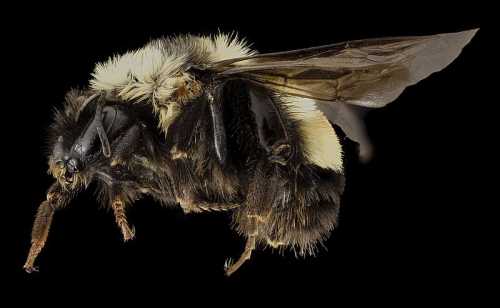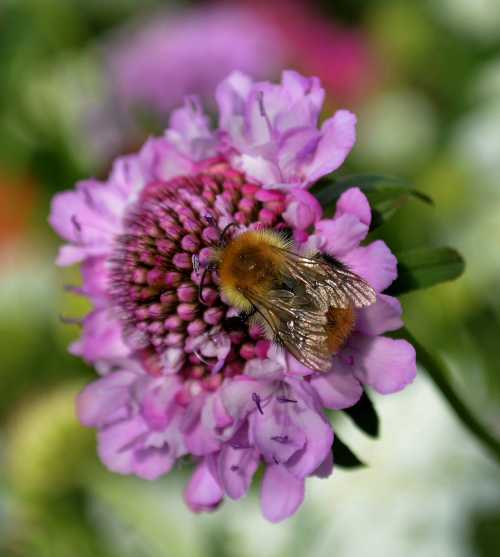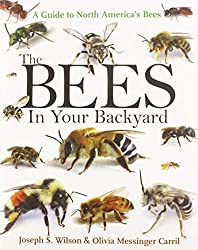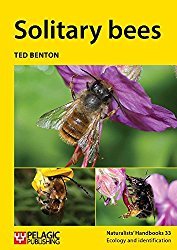Are Bees Endangered?
Over the years, I have felt encouraged to witness the increased awareness of the plight of bees and pollinators, and the general efforts of concerned farmers and gardeners to help them.
Sometimes, governments are also stepping in, and even local councils and other public bodies are taking action to help them.
With the increase in awareness of the need to help bees, I am sometimes asked whether bees are actually endangered, or whether bees are going extinct.
In one sense, the situation is not always straight forward, thanks primarily to a lack of historical and accurate data, but all that is changing.
Increasingly, populations of bees are being monitored, and according to the information we do have, a few pointers are available.
Are Bees Endangered?
 Rusty patched bumble bee - Bombus affinis
Rusty patched bumble bee - Bombus affinis(source: Sky Meadows, Virginia, Wikipedia Commons)
As I write in May 2023, yes, some bees are endangered.
For a general indicator, we can refer to the IUCN Red List.
The IUCN (International Union for Conservation of Nature) was established in 1964. Its 'Red List' aims to provide an indicator as to the health of the world's biodiversity, and the global extinction risk of species.
As such, the IUCN Red List can help inform country government, as well as international protection and conservation efforts.
For example, in the USA, law makers took action to protect various species of bumble bee - see Are Bees Fish In California?
Elsewhere, regions develop Biodiversity Action Plans - see the UK BAP Priority Species.
Species recorded on the 'Red List' are further categorised depending on status, from 'Vulnerable' to 'Critically Endangered'.
According to the IUCN, the term 'Least Concern' refers to species which are still important in terms of global biodiversity, and tracking them allows changes in the status of biodiversity to be monitored.
The IUCN state that some 'Least Concern' species are undergoing slow declines, and that these species should be monitored, with conservation action taken to prevent them from becoming threatened in the future.
Sadly, for many species there is (worryingly) insufficient data, meaning the exact status of the species cannot be determined and more data needs to be collected.
Number Of Bees On The IUCN Red List
On inspection of the IUCN data (May 2023), the number of bee species on the Red List1 are as follows:
| Number Of Bees On The IUCN Red List (As of May 2023) by category | |
|---|---|
| Status | Number Of Species |
| Critically endangered | 8 |
| Endangered | 18 |
| Vulnerable | 16 |
| Near threatened | 19 |
| Least concern (within the Red List) | 106 |
| Data deficient | 310 |
| Total number of species | 477 |
Note that some bee species are believed to be extinct in particular countries.
For example, Bombus pomorum (the Apple Bumble Bee) is long believed to be extinct in Britain2. The IUCN categorise Bombus pomorum as 'vulnerable and 'decreasing' in number within the Red List data.
What are the major threats to bees?
According to the IUCN, the main threats to bees are (the higher the score, the greater the threat):
- Habitat shifting and alteration (score: 60);
- Agro-industry farming (score: 57);
- Housing and urban areas, herbicides and pesticides, Fire & fire suppression (score: 41);
- Shifting agriculture (score: 29);
- Unspecified species (includes invasive species and diseases), droughts (score: 28);
- Tourism and recreation areas, small holder grazing (score: 27).
Note that 'habitat shifting and alteration' scores more than twice the threat to bees as 'tourism' and 'small holder grazing'.
See Bee Decline for further information.
Are honey bees endangered?
As far as I am aware, no species of honey bee are endangered.
However, thanks to the demise and collapses of honey bee colonies that were highlighted in Europe, the USA, Australia and other regions, it was clear that the causes needed to be investigated.
In particular, the role of neonicotinoid insecticides, a widely used category of insecticides, gained attention.
Whilst honey bees were not endangered, nevertheless it was clear that environmental factors visibly affecting honey bee populations, might well be taking their toll on wild bee species too.
Research has confirmed, for example that neonicotinoids can pose a threat to wild bee populations.
References
1. https://www.iucnredlist.org/
2. Field Guide to the Bees of Great Britain and Ireland by Steven Falk, Bloomsbury 2015.
If you found this page helpful or interesting, I'd really be grateful if you would share it with others - if not this page, perhaps another, such as Gardening For Bees.
Thank you so much :) .


